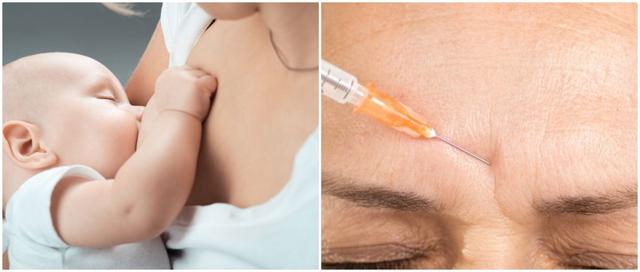Can using Botox in lactation hurt the baby?
There are certain activities, foods, and treatments that are not recommended during pregnancy and in full breastfeeding. Botox in lactation is a controversial procedure. This substance is a neuromodulator that softens the lines of expression and contorts the face.
Applying wrong amounts of botulinum toxin, the actual name of injection, could affect nerve tissues and have other consequences. It is understandable that pregnant women yearn to resume the aesthetic routines that they temporarily left aside, but skin care with soft tissue filling is in the background.
How does Botox apply and work?
Botox is the name of a brand used to generalize botulinum toxin, which is also marketed by Jeuveau ®, Xeomin ®and Dysport ®, for example. Its purpose is to vanish wrinkles, rooster legs and fine lines with doses that show effects in a few days, prolonging the results for up to 4 or 6 months.
The frequently treated areas are the face and neck. Plastic surgeons and dermatologists use these injections for aesthetic purposes.
It is also common to take treatment to the armpits to control problems of excessive sweating. Some specialists use this formula as medication for migraines, neck spasms and cerebral palsy, for example.
Direct injection into the muscle blocks nerve activity, thanks to neurotoxic proteins that prevent muscle cell contraction for a while. The results depend on dose and compliance with warnings, as stated in an article by the International Journal of Pharmaceutical Science Research.

What is the risk of using Botox in breast-feeding?
A publication by the United States Food and Drug Administration (FDA) notes that the safety of dermal filler injections during lactation or pregnancy is unknown. In general, the substance is expected to remain in the part of the body where it was administered and not to spread to the placenta or breast milk, but this cannot be certified at 100%.
It is recommended to wait for the end of pregnancy and breast feeding to return to Botox sessions. Experts agree that, however small the inoculated amounts may be, it is better to wait rather than risk so much. The right thing to do is to check with your doctor at the right time to return to treatment and prevent side effects.
Specialists point out that Botox is made from a bacterium called Clostridium botulinum. The micro-organism toxin is responsible for food poisoning known as botulism, a text released by the United States National Library of Medicine.
# SafetyTip: how to prevent hydrogen sulphide (# H2S) exposure? Http: / / t.co
— ASK EHS Sat Jul 12 12:51:57 +0000 2014
Other complications associated with botulinum toxin injections include the following:
Headache. Rash and snorts in the skin. Weakness or muscle paralysis. Blurred vision. Fallen pads. Inflammation or bleeding in the injected part.
Botox use tips
Creams, a healthy lifestyle and therapies away from certain substances are better alternatives to Botox in breastfeeding and pregnancy. Taking care of the diet and choosing supplements and vitamins offers favorable results in terms of reducing wrinkles.
Once you get medical approval to resume Botox inoculation, make sure you use the prescribed toxin. Leave the doses in the hands of professionals, instead of relying on unauthorized centers that put incorrect amounts on your skin. The sequels range from disfigurement of the face to the danger of death.
For non-infants, the advice on the use of Botox is based on accredited doctors or aestheticists who work the technique respecting the patient's musculature. Other basic guidelines include:
Do not consume alcohol before the procedure. In 24 hours do not massage the injected area. Avoid exposure to the sun.
How to treat skin during lactation
Just because Botox is not recommended in breast-feeding doesn't mean you can't try other anti-aging products. Topical formulas contain safer ingredients and work in caring for the skin of infants.
In addition, synthetic peptides contained in sera and lotions mimic the effects of botulinum toxin and involve fewer risks. Hyaluronic acid, for example, is a key ingredient in moisturizers, masks, and cleaners that soften without causing damage while breastfeeding. Exfoliations, massages and collagen creams are valid options.









1623